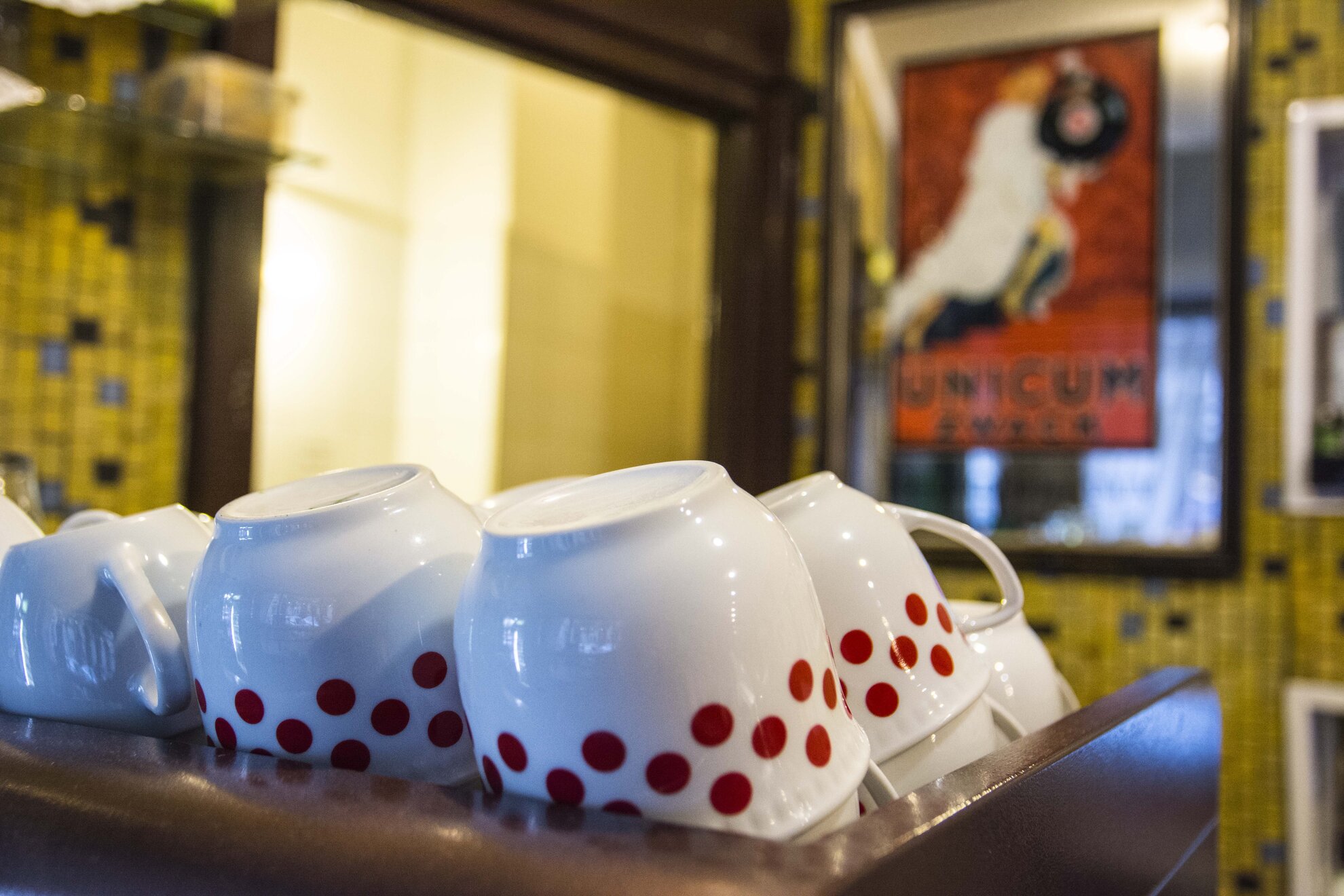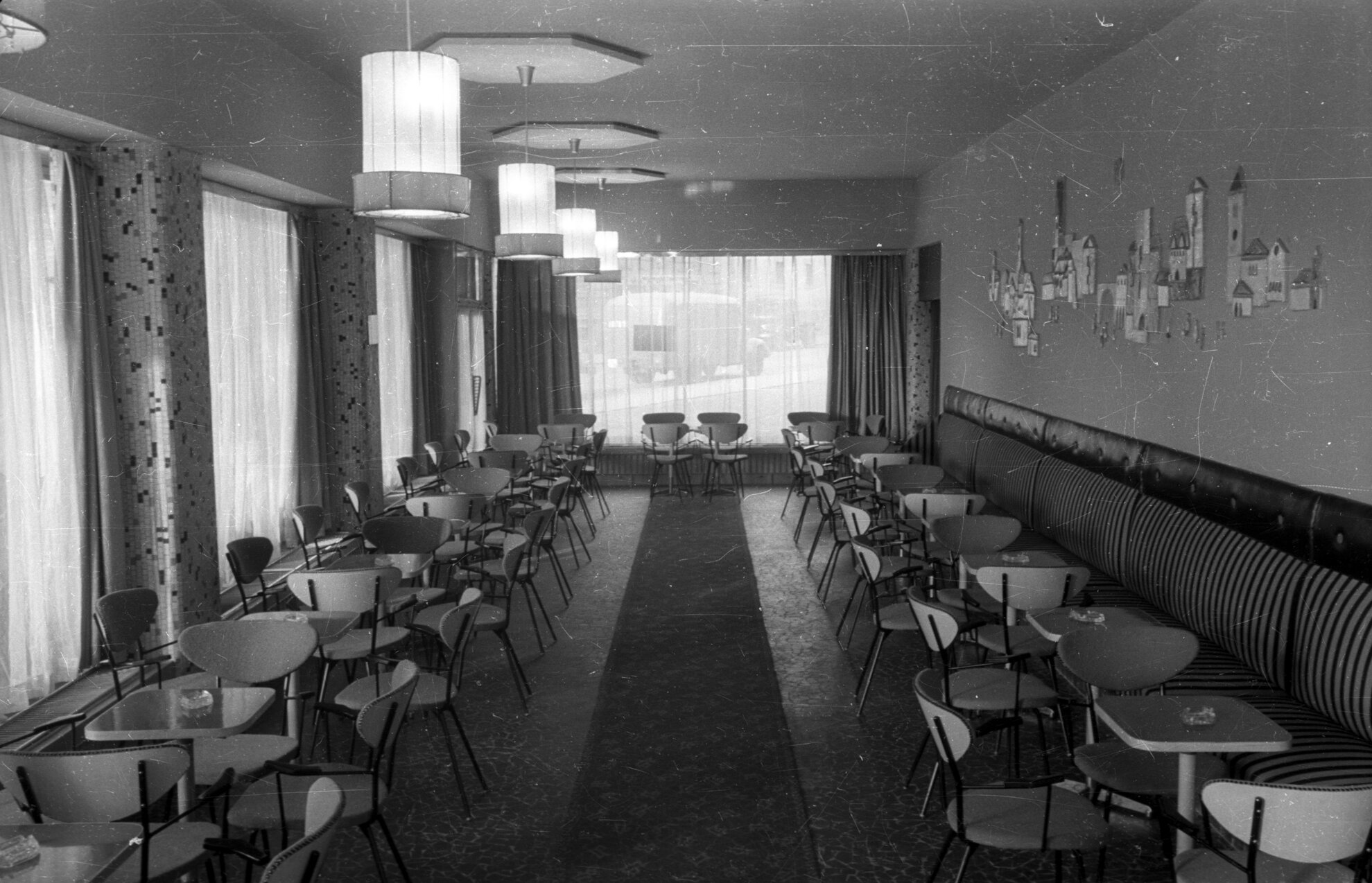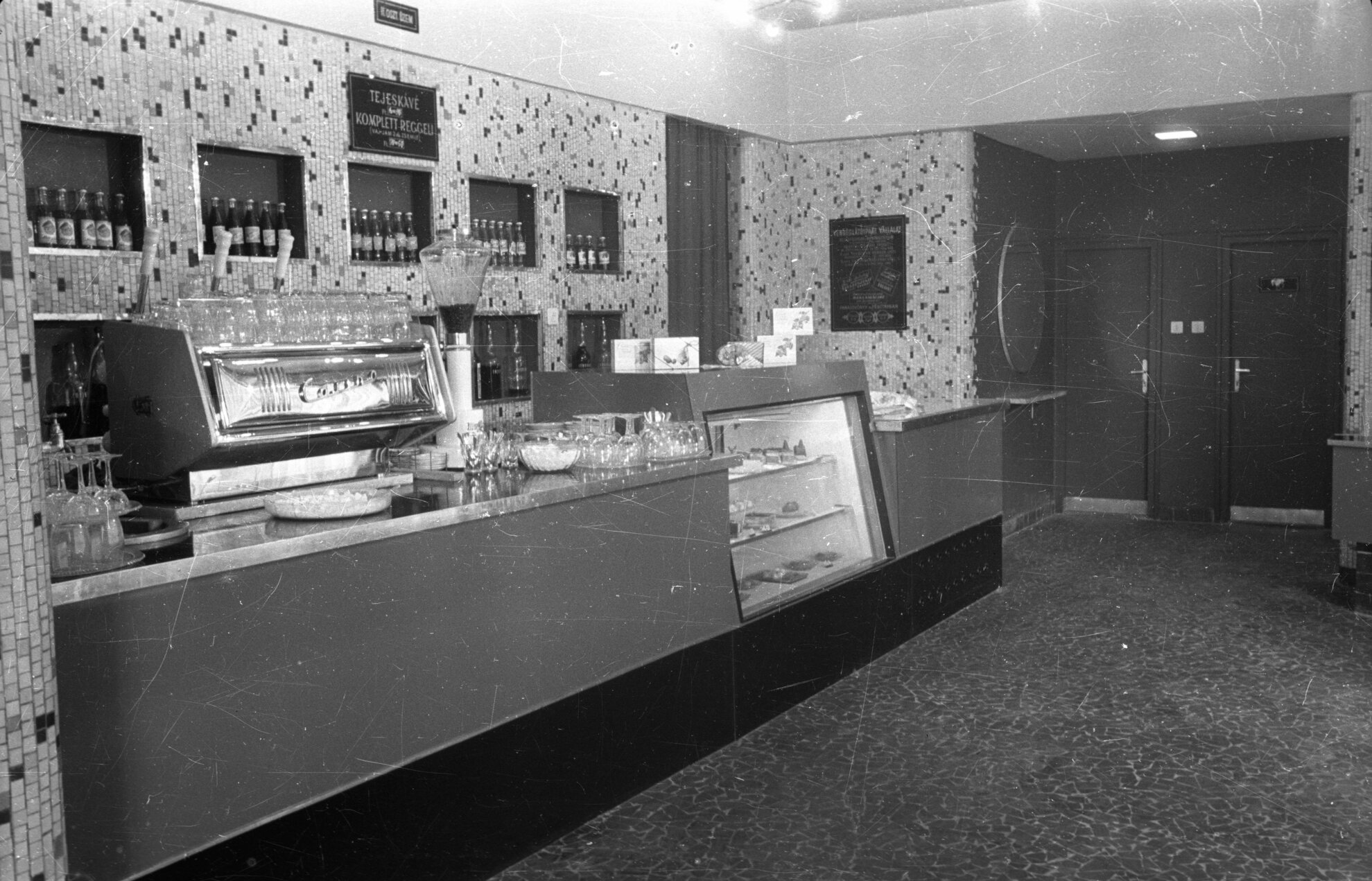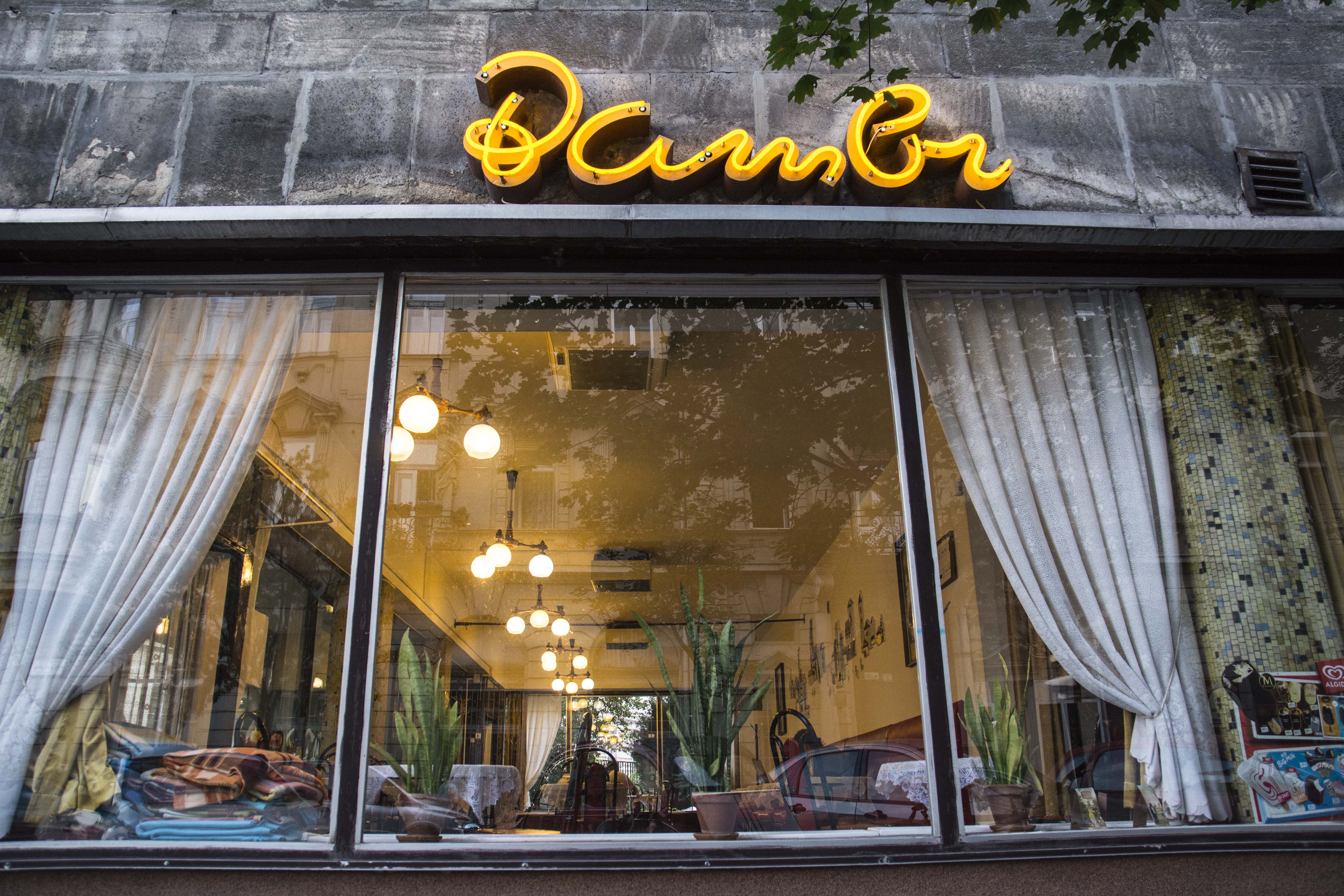Overlooking Bem tér, occuping the corner of Frankel Leó út and Fekete Sas utca, Bambi is the stuff of legend, some of it urban myth, some of it true, all of it spread by word of mouth around the city.

Eternal retro
Opened on 1 May 1961, three weeks after Yuri Gagarin’s first space flight, Bambi was not retro at the time but assumed this epithet as Buda slowly changed around it. Much around here, in fact, still very much retro – on nearby Fő utca, you can still find the ‘Colour TV repair shop’.

But Bambi is of its own, a thing of rare beauty, an oasis of calm as traffic rumbles past its popular terrace. Here, everything, but everything, is retro. Tables, chairs, all décor and decorations, coffeemakers, glasses, plates and cutlery. The menu and the drinks list. The old faces, the domino-playing regulars and old-school staff, although younger ones have also come in. This is time travel, without your own spacecraft.
Pre-retro history

The plot originally – until the mid-1890s, at least – consisted of two-storey residential houses. After their demolition, by 1898, a three-storey, Historicist-style apartment house was built. A popular actress of the day, Sári Fedák, second wife of famous playwright Ferenc Molnár, lived here.

After the destruction of the Siege of Budapest in early 1945, one building had to be demolished, replaced by another, larger, residential house.
Financial backing had come from the National Savings Bank, Országos Takarékpénztár, therefore the property gained the name of the OTP House. The beautiful building was unveiled in 1959, its street-level space initially unclaimed.

Three renowned designers were behind the project: Olga Mináry, the first Ybl-award-winning female architect, Dénes Perczel, who also became a painter and graphic artist, and István Janáky, another Ybl-award winner, responsible for the Palatinus lido.

Two years later, Bambi opened in 1961, not named after the popular soft drink of the day – which, of course, could also be ordered here – but after the fictitious deer. The news of the café opening quickly spread throughout the city, Bambi soon becoming one of the top places to meet in Budapest.

Stage and screen

The cult that sprang up around Bambi meant that filmmakers
were soon keen to use it. In 1963, it played a part in Once
in a Hundred Years, the screenplay written by György Moldova. For Sándor
Simó’s Those Who Wear Glasses in 1969, the director selected amateur actors from
Bambi regulars along with more famous ones.
Bambi was always frequented by stars
of stage and screen. Famous actress Hilda Gobbi was a regular, as was Mária
Ronyecz from the Cannes-acclaimed Time Stands Still. Actor/director István
Bujtor would often share a table with poet György Petri.

Literary evenings and readings were held regularly, involving the likes of Ági Voith, László Kabos, Ervin Kibédi and Gyula Bodrogi. From a contemporary standpoint, the most bizarre events were the so-called book discos. During the day, book stalls were set up near the espresso bar, and then in the evening, it was time to dance. In exchange for their admission fee, guests were not given a ticket, but a book, and when the disc jockey (or as they were called back then, the 'record owner') occasionally took a break between songs, they held a quiz based on the book being handed out.
Bambi myths

People flocked to Bambi for other reasons, too. The former manager, Pálné Füzy, sometimes resorted to marketing tricks. For example, in 1968 she posted an ad that a car in good condition was for sale, parked right in front of the Bambi for all to see. (This an era when people waited years to buy a car.) The price was so attractive that quite a few potential buyers came in from out of town even to see the vehicle in question which, of course, did not exist. Having come all this way, the visitor at least had to sit down and buy a drink.

The year 1968 is notable not only for this slight of hand, but also because that was when Ottóné Oszfolk appeared, at the age of 14, as a waitress. The café’s current manager, Oszfolk is somewhat mysterious, rarely seen and even more very rarely gives interviews. But she’s very much alive, as this photograph proves, taken on Bambi's very anniversary, 1 May 2021.

Oszfolk was a long-term tenant then bought the place outright in 2007. This apart, Bambi’s previous oldest institution was a certain Gézáné Boros, always here at opening time, who looked after the coffee before she retired in 2009. If ever you were served an espresso in a small glass at the Bambi before 2009, chances are she brewed it.
Essential elements

Like chess at the Széchenyi Baths, Bambi wouldn’t be Bambi without the same grumpy old men playing dominoes. As props, they are as essential as the furniture from the ’60s or the glass cups in which the coffee is served. Or the majolica tiles on the wall.
These colourful glazed compositions depict an urban scene, but mystery surrounds their provenance, however eye-catching they may be. Two theories are usually given. According to one, they were made by Miklós Erdély, architect, visual artist, film director and writer, and according to the other, they are the work of Lívia Gorka, a Munkácsy Prize-winning ceramicist.
The mystery may never come to light. Then again, mystery is what Bambi is all about.
Bambi Eszpresszó
District II. Frankel Leó út 2-4
Facebook
Current opening hours: Mon-Fri 7am-10pm, Sat-Sun 9am-10pm




